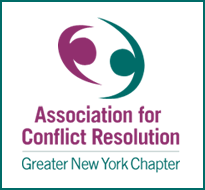Learning about Conflict ResolutionConflict resolution is the process of managing and resolving a disagreement or dispute between two or more parties in a constructive and mutually satisfactory way. It involves identifying the root cause of the conflict, understanding the perspectives and needs of all parties involved, and finding a solution that addresses the underlying issues to meet the interests of everyone involved. Conflict resolution can be applied in a variety of settings, such as personal relationships, workplaces, communities, and international diplomacy. Common forms of conflict resolution include mediation, arbitration, restorative justice, and peacebuilding. Mediation is a form of conflict resolution in which a neutral third party, called a mediator, helps to facilitate a discussion between two or more parties in dispute. The mediator's role is to guide the parties through the process of identifying the underlying issues and finding a mutually satisfactory solution. Mediation is often used in legal disputes, such as divorce and employment-related issues, but it can also be used in a range of other contexts, including community disputes, business conflicts, and international diplomacy. Arbitration is a legal process for resolving disputes between parties in which a neutral third party, called an arbitrator, is appointed to hear evidence and make a binding decision. It is often used as an alternative to litigation in court, as it is typically faster, less formal, and less costly. During arbitration, the parties present their evidence and arguments to the arbitrator, who then decides an outcome based on the facts and the law. The decision is typically final and binding. One of the benefits of arbitration is that it is a private process, meaning that the proceedings and the decision are not made public. This can be particularly beneficial in cases where the parties involved wish to keep the details of the dispute confidential.
Restorative justice reflects the capacity of all people for healing, growth, and transformation by creating pathways for accountability, self-determination, and connection. Beyond the individuals directly impacted by conflict or harm, restorative justice asks each of us to reflect on our collective responsibility for creating conditions that enable and foster harm, and tasks us with supporting accountability and safety. Restorative justice has a range of applications within communities, schools, and the justice system. It may also be used to address mass social conflict and/or injustice. Peacebuilding is a range of activities aimed at promoting sustainable peace and preventing the reoccurrence of conflict in societies that have experienced violent conflicts or are at risk of such conflicts. Peacebuilding is a complex and multidimensional process that involves addressing the root causes of conflict, promoting reconciliation and trust-building, as well as strengthening institutions and governance structures to ensure their greater inclusivity, accountability, and responsiveness to all members of society. It can involve a wide range of actors, including local communities, civil society organizations, governments, international organizations, and peacekeeping forces. Some common peacebuilding strategies include promoting intergroup dialogue and cooperation, supporting conflict resolution and reconciliation processes, strengthening democratic institutions, and promoting economic development and social justice. The ultimate goal of peacebuilding is to establish a lasting and sustainable peace, which is characterized by social cohesion, political stability, and economic development. Peacebuilding efforts can take a long time and require sustained engagement and commitment from all stakeholders. |


